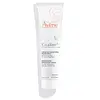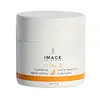What's inside
What's inside
 Key Ingredients
Key Ingredients

 Benefits
Benefits

 Concerns
Concerns

 Ingredients Side-by-side
Ingredients Side-by-side

Water
Skin ConditioningCaprylic/Capric Triglyceride
MaskingParaffinum Liquidum
EmollientGlycerin
HumectantHydrogenated Vegetable Oil
EmollientZinc Oxide
Cosmetic ColorantPropylene Glycol
HumectantPolyglyceryl-2 Sesquiisostearate
EmulsifyingPEG-22/Dodecyl Glycol Copolymer
EmulsifyingAluminum Stearate
Cosmetic ColorantAquaphilus Dolomiae Ferment Filtrate
Skin ConditioningArginine
MaskingBeeswax
Emulsion StabilisingCopper Sulfate
Skin ConditioningMagnesium Stearate
Cosmetic ColorantMicrocrystalline Wax
Emulsion StabilisingTromethamine
BufferingZinc Sulfate
AntimicrobialWater, Caprylic/Capric Triglyceride, Paraffinum Liquidum, Glycerin, Hydrogenated Vegetable Oil, Zinc Oxide, Propylene Glycol, Polyglyceryl-2 Sesquiisostearate, PEG-22/Dodecyl Glycol Copolymer, Aluminum Stearate, Aquaphilus Dolomiae Ferment Filtrate, Arginine, Beeswax, Copper Sulfate, Magnesium Stearate, Microcrystalline Wax, Tromethamine, Zinc Sulfate
Aloe Barbadensis Leaf Juice
Skin ConditioningWater
Skin ConditioningGlycerin
HumectantDimethicone
EmollientC12-15 Alkyl Benzoate
AntimicrobialGlyceryl Stearate
EmollientIsostearyl Neopentanoate
EmollientPEG-100 Stearate
Simmondsia Chinensis Seed Oil
EmollientCaprylic/Capric Triglyceride
MaskingCetearyl Alcohol
EmollientCitrus Aurantium Dulcis Oil
MaskingLimonene
PerfumingBrassica Campestris/Aleurites Fordi Oil Copolymer
Skin ConditioningCetyl Alcohol
EmollientTetrahexyldecyl Ascorbate
AntioxidantStearyl Alcohol
EmollientPhenoxyethanol
PreservativeCyclopentasiloxane
EmollientTocopherol
AntioxidantCeteth-10 Phosphate
CleansingDicetyl Phosphate
EmulsifyingMagnesium Ascorbyl Phosphate
AntioxidantPanthenol
Skin ConditioningSqualane
EmollientCaprylyl Glycol
EmollientGlycine Soja Sterols
EmollientLinoleic Acid
CleansingPhospholipids
Skin ConditioningEthylhexylglycerin
Skin ConditioningGlucosamine Hcl
Hexylene Glycol
EmulsifyingXanthan Gum
EmulsifyingMagnesium Aluminum Silicate
AbsorbentPEG-8
HumectantButylene Glycol
HumectantPhytic Acid
Sodium Hydroxide
BufferingPisum Sativum Extract
Skin ConditioningAllantoin
Skin ConditioningRetinyl Palmitate
Skin ConditioningBambusa Vulgaris Leaf/Stem Extract
HumectantCitrus Nobilis Peel Oil
MaskingYeast Polysaccharides
Skin ConditioningDipotassium Glycyrrhizate
HumectantDisodium EDTA
Sodium Hyaluronate
HumectantBenzoic Acid
MaskingAscorbyl Palmitate
AntioxidantPyruvic Acid
MaskingTremella Fuciformis Sporocarp Extract
AntioxidantCitric Acid
BufferingAscorbic Acid
AntioxidantVitis Vinifera Seed Extract
AntimicrobialAloe Barbadensis Leaf Juice, Water, Glycerin, Dimethicone, C12-15 Alkyl Benzoate, Glyceryl Stearate, Isostearyl Neopentanoate, PEG-100 Stearate, Simmondsia Chinensis Seed Oil, Caprylic/Capric Triglyceride, Cetearyl Alcohol, Citrus Aurantium Dulcis Oil, Limonene, Brassica Campestris/Aleurites Fordi Oil Copolymer, Cetyl Alcohol, Tetrahexyldecyl Ascorbate, Stearyl Alcohol, Phenoxyethanol, Cyclopentasiloxane, Tocopherol, Ceteth-10 Phosphate, Dicetyl Phosphate, Magnesium Ascorbyl Phosphate, Panthenol, Squalane, Caprylyl Glycol, Glycine Soja Sterols, Linoleic Acid, Phospholipids, Ethylhexylglycerin, Glucosamine Hcl, Hexylene Glycol, Xanthan Gum, Magnesium Aluminum Silicate, PEG-8, Butylene Glycol, Phytic Acid, Sodium Hydroxide, Pisum Sativum Extract, Allantoin, Retinyl Palmitate, Bambusa Vulgaris Leaf/Stem Extract, Citrus Nobilis Peel Oil, Yeast Polysaccharides, Dipotassium Glycyrrhizate, Disodium EDTA, Sodium Hyaluronate, Benzoic Acid, Ascorbyl Palmitate, Pyruvic Acid, Tremella Fuciformis Sporocarp Extract, Citric Acid, Ascorbic Acid, Vitis Vinifera Seed Extract
 Reviews
Reviews

Ingredients Explained
These ingredients are found in both products.
Ingredients higher up in an ingredient list are typically present in a larger amount.
This ingredient is an emollient, solvent, and texture enhancer. It is considered a skin-softener by helping the skin prevent moisture loss.
It helps thicken a product's formula and makes it easier to spread by dissolving clumping compounds.
Caprylic Triglyceride is made by combining glycerin with coconut oil, forming a clear liquid.
While there is an assumption Caprylic Triglyceride can clog pores due to it being derived from coconut oil, there is no research supporting this.
Learn more about Caprylic/Capric TriglycerideGlycerin is already naturally found in your skin. It helps moisturize and protect your skin.
A study from 2016 found glycerin to be more effective as a humectant than AHAs and hyaluronic acid.
As a humectant, it helps the skin stay hydrated by pulling moisture to your skin. The low molecular weight of glycerin allows it to pull moisture into the deeper layers of your skin.
Hydrated skin improves your skin barrier; Your skin barrier helps protect against irritants and bacteria.
Glycerin has also been found to have antimicrobial and antiviral properties. Due to these properties, glycerin is often used in wound and burn treatments.
In cosmetics, glycerin is usually derived from plants such as soybean or palm. However, it can also be sourced from animals, such as tallow or animal fat.
This ingredient is organic, colorless, odorless, and non-toxic.
Glycerin is the name for this ingredient in American English. British English uses Glycerol/Glycerine.
Learn more about GlycerinWater. It's the most common cosmetic ingredient of all. You'll usually see it at the top of ingredient lists, meaning that it makes up the largest part of the product.
So why is it so popular? Water most often acts as a solvent - this means that it helps dissolve other ingredients into the formulation.
You'll also recognize water as that liquid we all need to stay alive. If you see this, drink a glass of water. Stay hydrated!
Learn more about Water